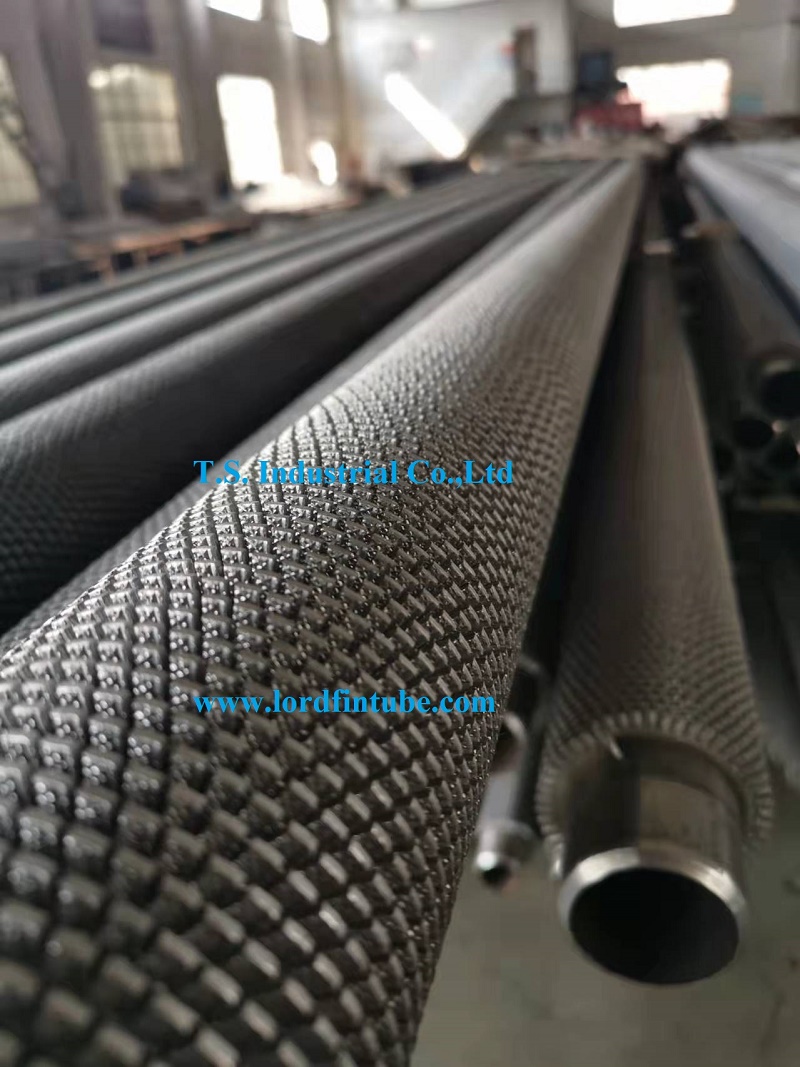High-frequency welded spiral finned tube
High-frequency welded spiral finned tubes are precision-manufactured products produced using advanced fin tube production lines from South Korea. These tubes are designed to meet national or foreign standards and can also be manufactured according to non-standard specifications to fulfill customer requirements for mass production.
How to produce high-frequency welded spiral finned tube?
Producing high-frequency welded spiral finned tubes involves a meticulously engineered process aimed at ensuring a durable and effective bond between the fins and the tube.
►1. High-Frequency Resistance Welding: This advanced welding technique is central to the production process, guaranteeing a robust connection between the spiral fins and the tube. Carefully calibrated, it optimizes heat dissipation, particularly beneficial in civil building heating systems reliant on natural convection mechanisms, thereby encouraging widespread adoption.
►2. Advantages: High-frequency resistance welded spiral finned tubes offer a plethora of benefits, including exceptional pressure resistance, minimal leakage, efficient heat dissipation, a compact structure, and a design that conserves materials. These attributes make them the preferred choice for enhancing heat transfer in industrial boilers, power station boilers, medium heat pipes, and fuel gas boiler applications.
►3. Welding Technique Efficacy: The high-frequency resistance welding technique capitalizes on the elevated temperatures generated by the high-frequency effect, prompting material fusion under external pressure. This results in superior metal contact surfaces, minimal thermal resistance, reduced heat loss, an increased fin thermalization coefficient, expanded heat transfer area, and heightened heat transfer efficiency. Their total heat transfer coefficient surpasses that of bare pipes by 4-8 times, with a welding success rate exceeding 98%.
►4. Versatile Applications: High-frequency resistance welded spiral finned tubes find wide-ranging applications across industries such as petroleum, chemical, boiler manufacturing, metallurgy, textile, drying, cooling, and various industrial furnaces. They are utilized in heat exchangers, heat recovery devices, air coolers, heaters, economizers, and civil heating equipment, serving as indispensable components for facilitating superior heat transfer.
By integrating scientific precision, material optimization, and advanced welding techniques, high-frequency resistance welded spiral finned tubes emerge as essential assets across a spectrum of industrial and civil heating applications.
HFW spiral finned tube manufacturing parameters:
►1. Tube Material Selection: The base tube material is typically chosen based on the specific application requirements, considering factors such as temperature, pressure, corrosion resistance, and mechanical properties.
►2. Tube Diameter and Thickness: Determined based on the heat transfer requirements and the size limitations of the application.
►3. Finned Strip Material: The material of the finned strip is chosen based on factors such as compatibility with the base tube material, heat transfer efficiency, and corrosion resistance.
►4. Finned Strip Thickness: Dictated by the desired fin height and strength requirements.
►5. Finned Strip Width: Determined based on the desired fin density and surface area for heat transfer.
►6. Pitch (Distance between Fins): The pitch is crucial for determining the number of fins per unit length, impacting heat transfer efficiency and pressure drop.
►7. Helix Angle: The angle at which the fins are wound around the base tube affects the flow characteristics and heat transfer performance.
►8. Welding Parameters: Parameters such as welding current, voltage, and speed are critical for ensuring proper fusion between the finned strip and the base tube, as well as maintaining the structural integrity of the finned tube.
►9. Heat Treatment: Depending on the materials used and the desired properties, heat treatment processes such as annealing or stress relieving may be employed to improve the mechanical or metallurgical properties of the finished product.
- Product Material: Carbon steel, stainless steel, alloy steel
- Pipe Diameter: 25.4-219.08mm
- Pipe Thickness: 2.0-10mm
- Pipe Length: 3000-23000mm
- Fin Thickness: 0.8-2.5mm
- Fin Width: 10-25.4mm


